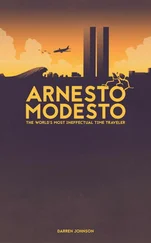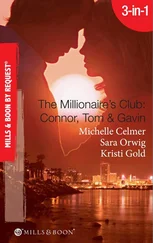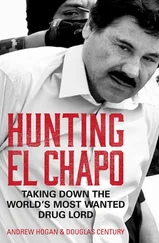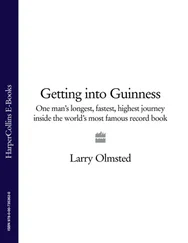The first tourists had expected that Australia would prove the tougher part of the tour, but in the end it was New Zealand, where immigrants and natives alike had taken to the sport with great gusto, that proved a far more difficult territory. Their provincial sides in particular learned quickly from the visitors, not least the marvellous passing game among the backs. This was a revelation to the New Zealand teams, which had concentrated on the ‘dribbling’ game involving gangs of players moving the ball forward with their feet or with the ball ‘up the jumper’.
Opinions vary as to how much the tourists imparted to their hosts—‘I challenge anyone to tell me what the 1888 side taught us’ wrote subsequent New Zealand captain T.R. Ellison, though one of his successors as captain, Dave Gallaher, wrote ‘the exhibitions of passing which they gave were most fascinating and impressive to the New Zealander, who was not slow to realise the advantages of these methods. One may safely say that, from that season, dates the era of high-class rugby in the colony.’
If Gallaher is to be believed, then the first tourists accomplished something wonderful for world rugby, as they played their part in helping to create the passion for good rugby which still permeates the sport in New Zealand. For their role in bringing about the players who became the All Blacks, those first tourists deserve our thanks, though not many of New Zealand’s humbled opponents over the years might agree.
A triumphal progress, then, but one tinged with tragedy. In August, the captain of the side, Bob Seddon of Lancashire, was out rowing on the Hunter River in New South Wales when his scull capsized and he was drowned. He was by all accounts a popular figure, and his loss was deeply felt both by the tourists and their hosts—a memorial was erected to him in the nearby town of Maitland. Some 120 years later, it is well maintained by local enthusiasts.
Seddon’s place as captain was taken by A.E. Stoddart, who went on to become the star of the tour with his all-round skills. As one of the triumvirate who had put together this first tour, Stoddart may well have made some money, but if so, he was not saying. When some of the tourists tired of their schedule, he also invited a friend from the cricket world to come and play for the Lions—which is how C. Aubrey Smith, the gentlemanly actor of Prisoner of Zenda fame, otherwise known as Sir Charles Aubrey Smith KBE, a future captain of England’s cricket side, became the only Hollywood star ever to turn out for the Lions.
After all the travel—it took six weeks to sail there and back—the tourists returned to some plaudits for their pioneering efforts but also a strict ruling by the RFU. Every player who came back to Britain was forced to swear an affidavit on their return stating that they had not been paid for playing on the tour. The RFU were satisfied though suspicious, and one player did not have to sign—Angus Stuart stayed on in New Zealand and played for its national side in 1893 before returning to Britain and taking up rugby league as a coach.
One final element of controversy emerged from that first tour, and the RFU at last found something to get really angry about. While in Victoria, the players took part in exhibition matches of football played under Victorian or what we now call Australian Rules. It was in these matches that C. Aubrey Smith made his appearances for the Lions, never having actually played rugby before. The surprising thing is how well the visitors managed, winning 6, drawing 1 and losing 11 of the 18 matches which undoubtedly lined the pockets of Shrewsbury and Shaw and may well have enriched some of the players. No one really knows what went on in the background, but as a touring entity, the side from Britain and Ireland was undoubtedly a profitable enterprise—for some.
The seeds had been sown by these first tourists, and the full flowering of the touring concept did not take long to emerge. In 1891, with the full approval of the RFU, a second tour was planned, this time to South Africa at the invitation of the Western Province Union, the South African Rugby Board being still in its infancy.
As before, it was a previous visit by an England cricket side which inspired the thought of a rugby tour, but in those days South Africa was probably bottom of the rugby heap. The matches were not expected to be close as South African rugby was so far behind that of Britain and Ireland. It was feared no one would want to see a mismatch, and Cecil Rhodes, one of the richest men in Africa and Prime Minister of the Cape Colony as well as an ardent imperialist, had to step in to underwrite the whole tour. The exercise thus became something of a missionary outing, with the tourists keen to show the colonials just how the game should be played, in the hope they would learn quickly and become stiffer opposition in years ahead. They certainly did that.
With official sanction, and former RFU Secretary Edwin ‘Daddy’ Ash as manager, this time most of the tourists were better exponents of the game than their predecessors. Drawn entirely from England and Scotland, there were 9 internationalists in the squad of 21 players, with the remainder all from big clubs and a sizeable contingent from Cambridge University’s then dazzling squad. Students could also usually afford to take a long break from their studies, and it is obvious from the fact that so few ‘northerners’ appeared in the squad that the bitter struggle over ‘broken time’ payments—compensation for lost wages—was already affecting the selection policies.
This tour introduced a new concept to world rugby—the international Test series. A team representing all of South Africa—though this technically was not an independent country in its own right—would play the Lions three times in the course of the tour, losing all three Test Matches.
Despite the fears of disparity between the teams, large numbers came out to support the home sides, with 6,000 reported to have attended the first Test. There was also great excitement about the tour across South Africa, with the considerable political differences between the various regions such as the Cape Colony and the Transvaal being set aside for the duration.
The statistics do not lie. The Lions went unbeaten through all 20 matches, notching 226 points for the loss of just 1, and that in the opening match against the Cape Town Club. It remains the most one-sided tour to date.
Captained by Bill Maclagan, who had played 26 times for Scotland, the visitors were just too big and strong, too skilful and experienced, for the willing but technically unsound South Africans. In only one match, on brick-hard ground in Kimberley against Griqualand West, did the visitors feel in any real danger, the Lions eventually winning 3–0, though Stellenbosch in the final match actually held the visitors to just 2–0.
A bigger problem for the tourists was the many days of backbreaking travel in horse-drawn vehicles between the various venues, as well as the generous hospitality of their hosts. Centre Paul Clauss described the tour as ‘champagne and travel’, and some fans would say that this succinct description of Lions tours has never been bettered.
Without a doubt, the tour transformed South African rugby, not least because of a gift made by a shipping magnate. The party had travelled on the Dunottar Castle of the Union Castle Line, and its owner donated a magnificent trophy to be presented to the province that performed best against the Lions. The tourists selected Griqualand West, who became the first proud owners of the cup competed for by the South African provinces to this day and named after the man who donated it, Sir Donald Currie.
More importantly, the South African rugby players took to heart all the lessons they had learned from the 1891 Lions. One of the Lions, the Rev. H. Marshall, wrote that the tourists had ‘initiated the colonists of South Africa into the fine points and science of the rugby game’. Maclagan and his men did their missionary work all too well, as subsequent touring parties would find to their cost.
Читать дальше












